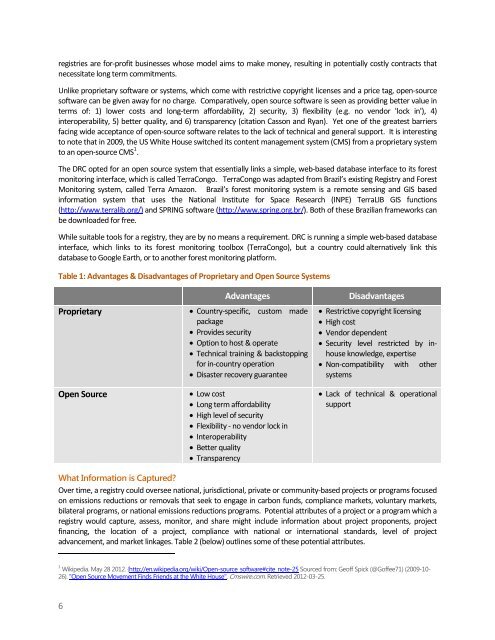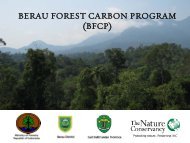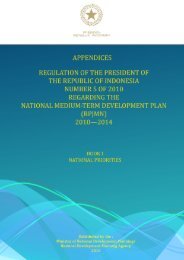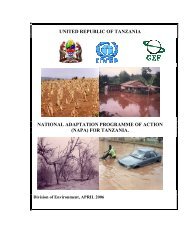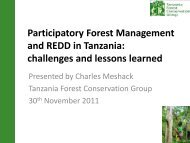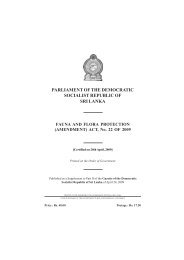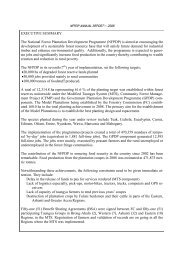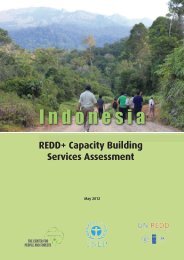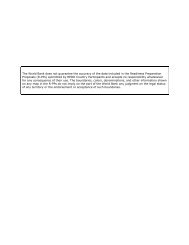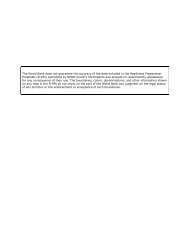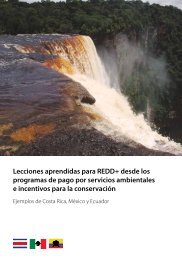PDF - The REDD Desk
PDF - The REDD Desk
PDF - The REDD Desk
Create successful ePaper yourself
Turn your PDF publications into a flip-book with our unique Google optimized e-Paper software.
egistries are for-profit businesses whose model aims to make money, resulting in potentially costly contracts that<br />
necessitate long term commitments.<br />
Unlike proprietary software or systems, which come with restrictive copyright licenses and a price tag, open-source<br />
software can be given away for no charge. Comparatively, open source software is seen as providing better value in<br />
terms of: 1) lower costs and long-term affordability, 2) security, 3) flexibility (e.g. no vendor 'lock in'), 4)<br />
interoperability, 5) better quality, and 6) transparency (citation Casson and Ryan). Yet one of the greatest barriers<br />
facing wide acceptance of open-source software relates to the lack of technical and general support. It is interesting<br />
to note that in 2009, the US White House switched its content management system (CMS) from a proprietary system<br />
to an open-source CMS 1 .<br />
<strong>The</strong> DRC opted for an open source system that essentially links a simple, web-based database interface to its forest<br />
monitoring interface, which is called TerraCongo. TerraCongo was adapted from Brazil’s existing Registry and Forest<br />
Monitoring system, called Terra Amazon. Brazil’s forest monitoring system is a remote sensing and GIS based<br />
information system that uses the National Institute for Space Research (INPE) TerraLIB GIS functions<br />
(http://www.terralib.org/) and SPRING software (http://www.spring.org.br/). Both of these Brazilian frameworks can<br />
be downloaded for free.<br />
While suitable tools for a registry, they are by no means a requirement. DRC is running a simple web-based database<br />
interface, which links to its forest monitoring toolbox (TerraCongo), but a country could alternatively link this<br />
database to Google Earth, or to another forest monitoring platform.<br />
Table 1: Advantages & Disadvantages of Proprietary and Open Source Systems<br />
Proprietary<br />
Open Source<br />
Advantages<br />
Country-specific, custom made<br />
package<br />
Provides security<br />
Option to host & operate<br />
Technical training & backstopping<br />
for in-country operation<br />
Disaster recovery guarantee<br />
Low cost<br />
Long term affordability<br />
High level of security<br />
Flexibility - no vendor lock in<br />
Interoperability<br />
Better quality<br />
Transparency<br />
Disadvantages<br />
Restrictive copyright licensing<br />
High cost<br />
Vendor dependent<br />
Security level restricted by inhouse<br />
knowledge, expertise<br />
Non-compatibility with other<br />
systems<br />
Lack of technical & operational<br />
support<br />
What Information is Captured<br />
Over time, a registry could oversee national, jurisdictional, private or community-based projects or programs focused<br />
on emissions reductions or removals that seek to engage in carbon funds, compliance markets, voluntary markets,<br />
bilateral programs, or national emissions reductions programs. Potential attributes of a project or a program which a<br />
registry would capture, assess, monitor, and share might include information about project proponents, project<br />
financing, the location of a project, compliance with national or international standards, level of project<br />
advancement, and market linkages. Table 2 (below) outlines some of these potential attributes.<br />
1 Wikipedia. May 28 2012. (http://en.wikipedia.org/wiki/Open-source_software#cite_note-25 Sourced from: Geoff Spick (@Goffee71) (2009-10-<br />
26). "Open Source Movement Finds Friends at the White House". Cmswire.com. Retrieved 2012-03-25.<br />
6


